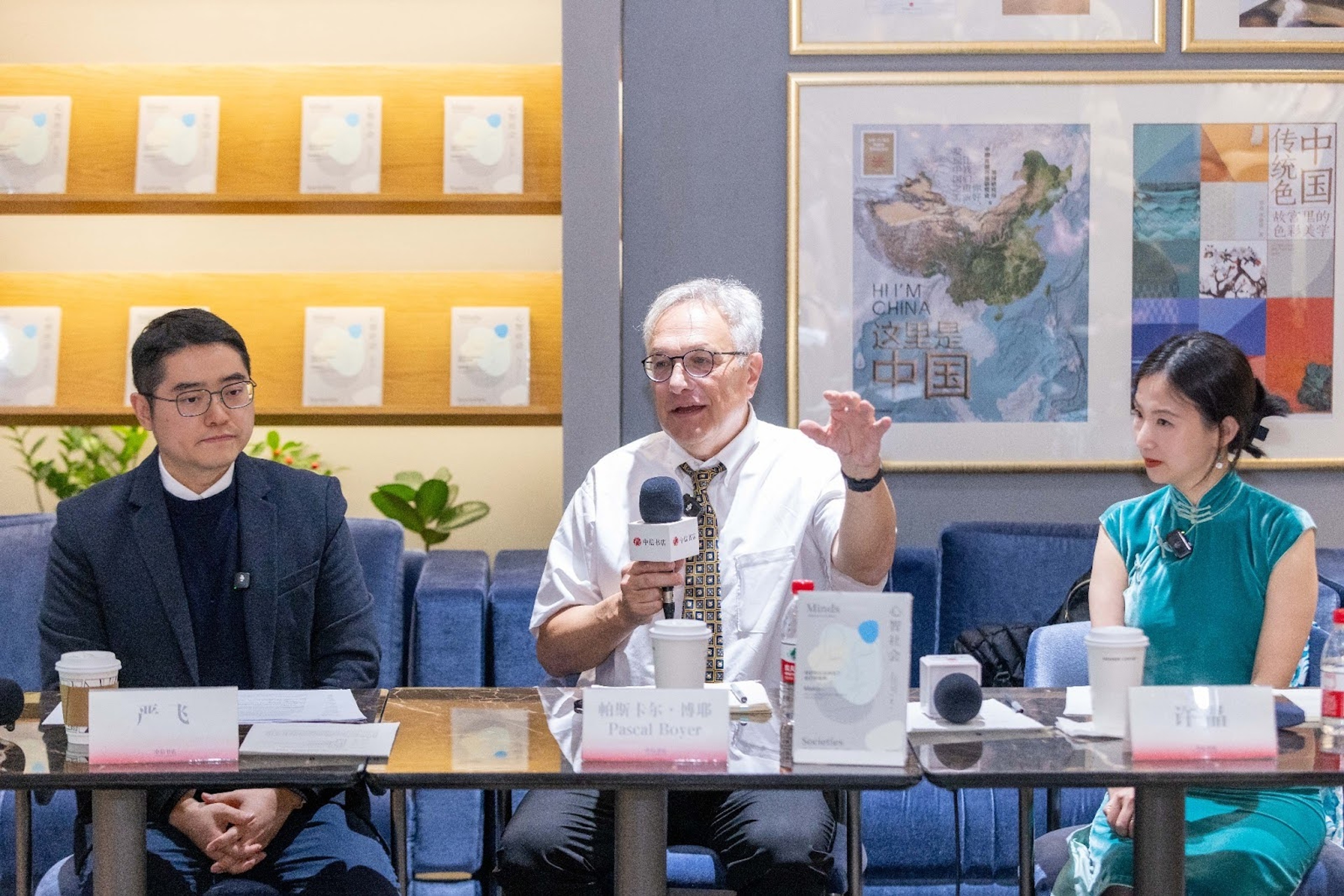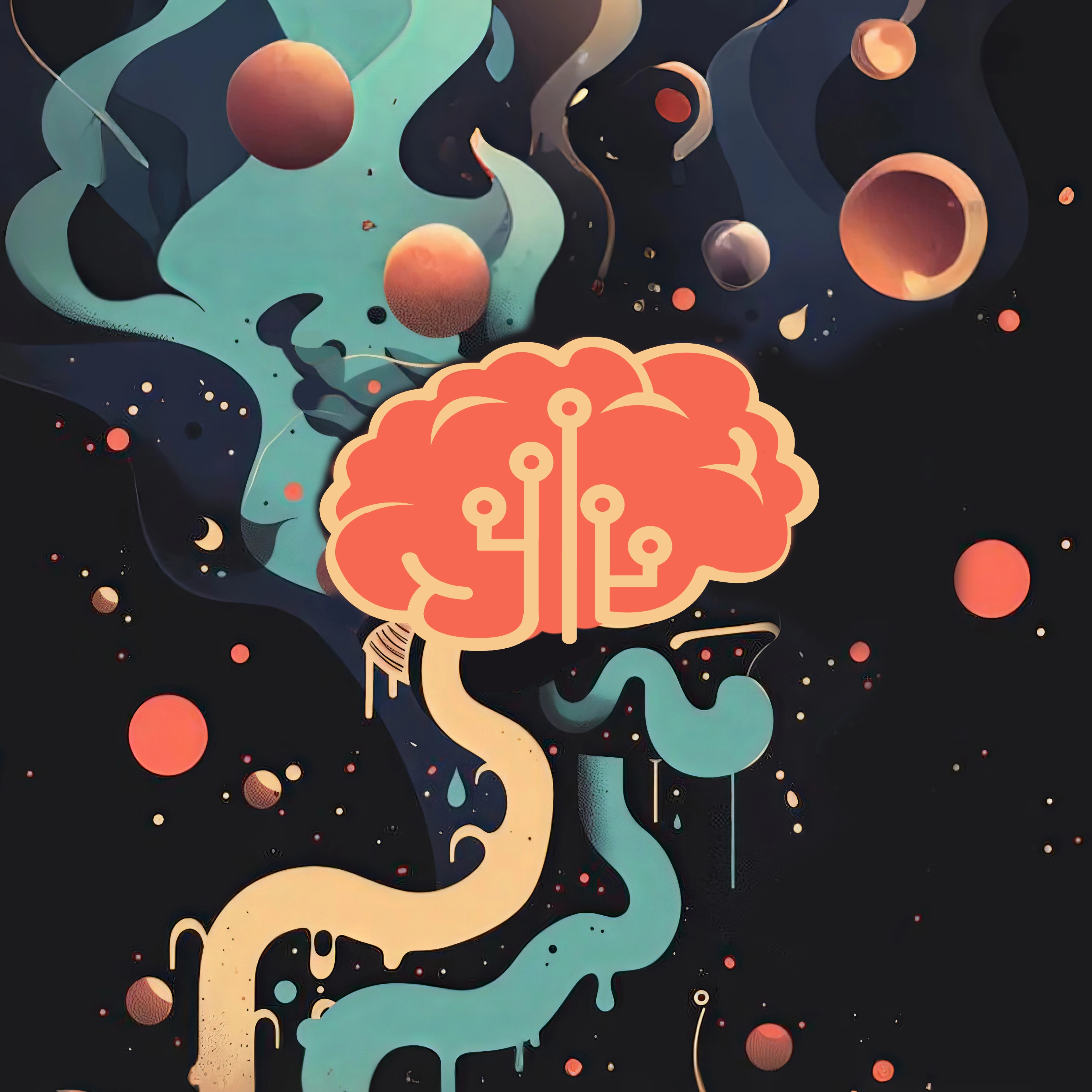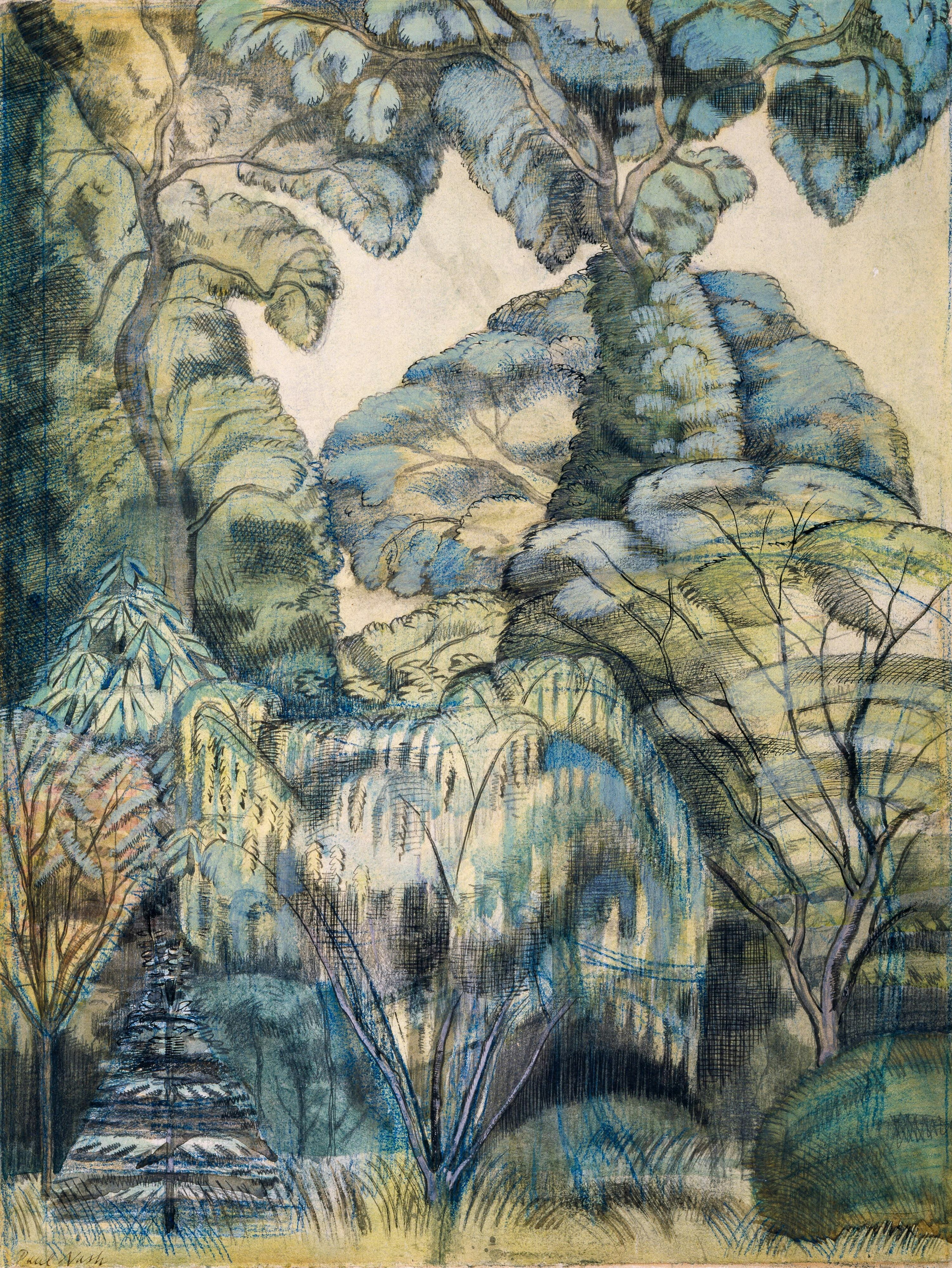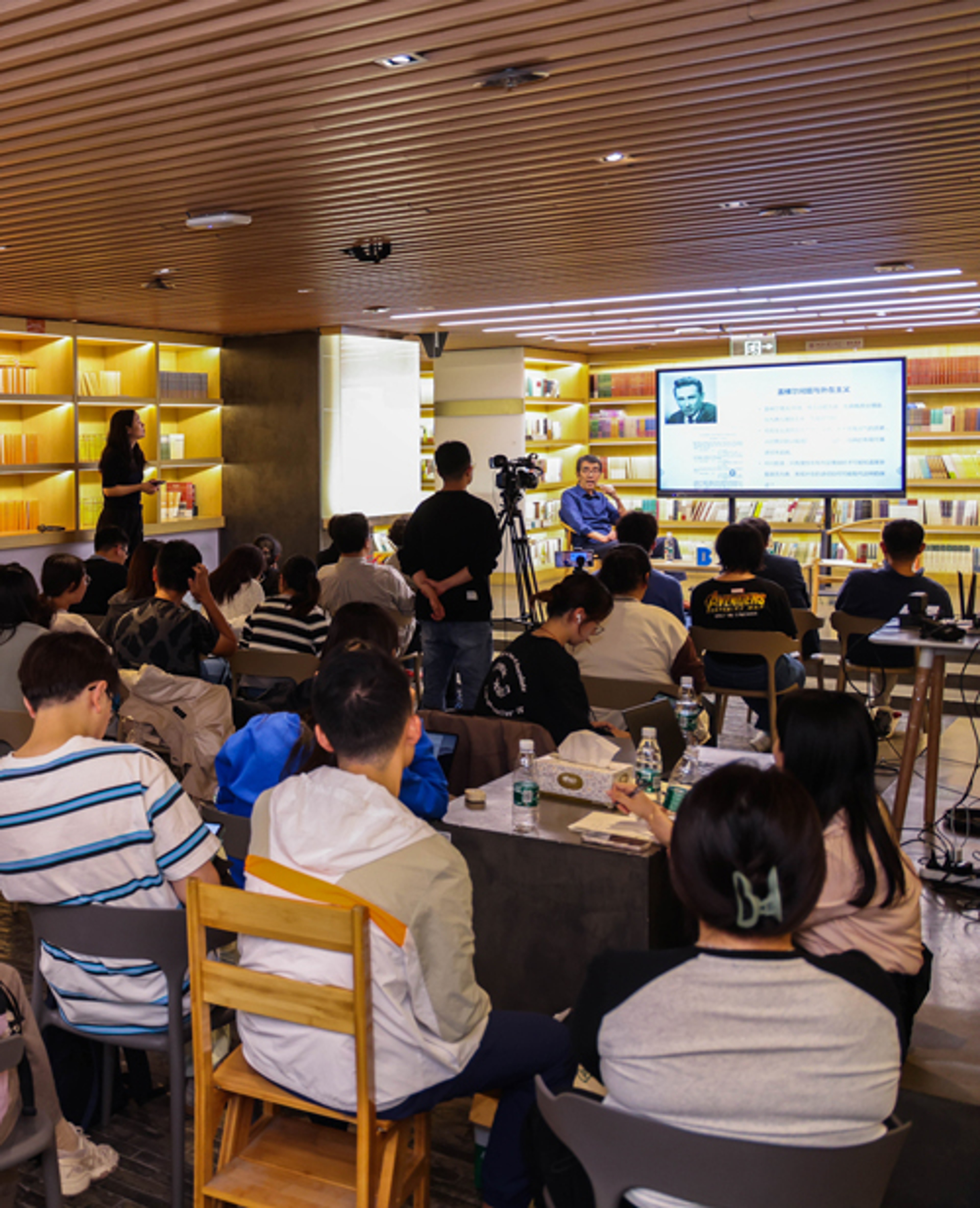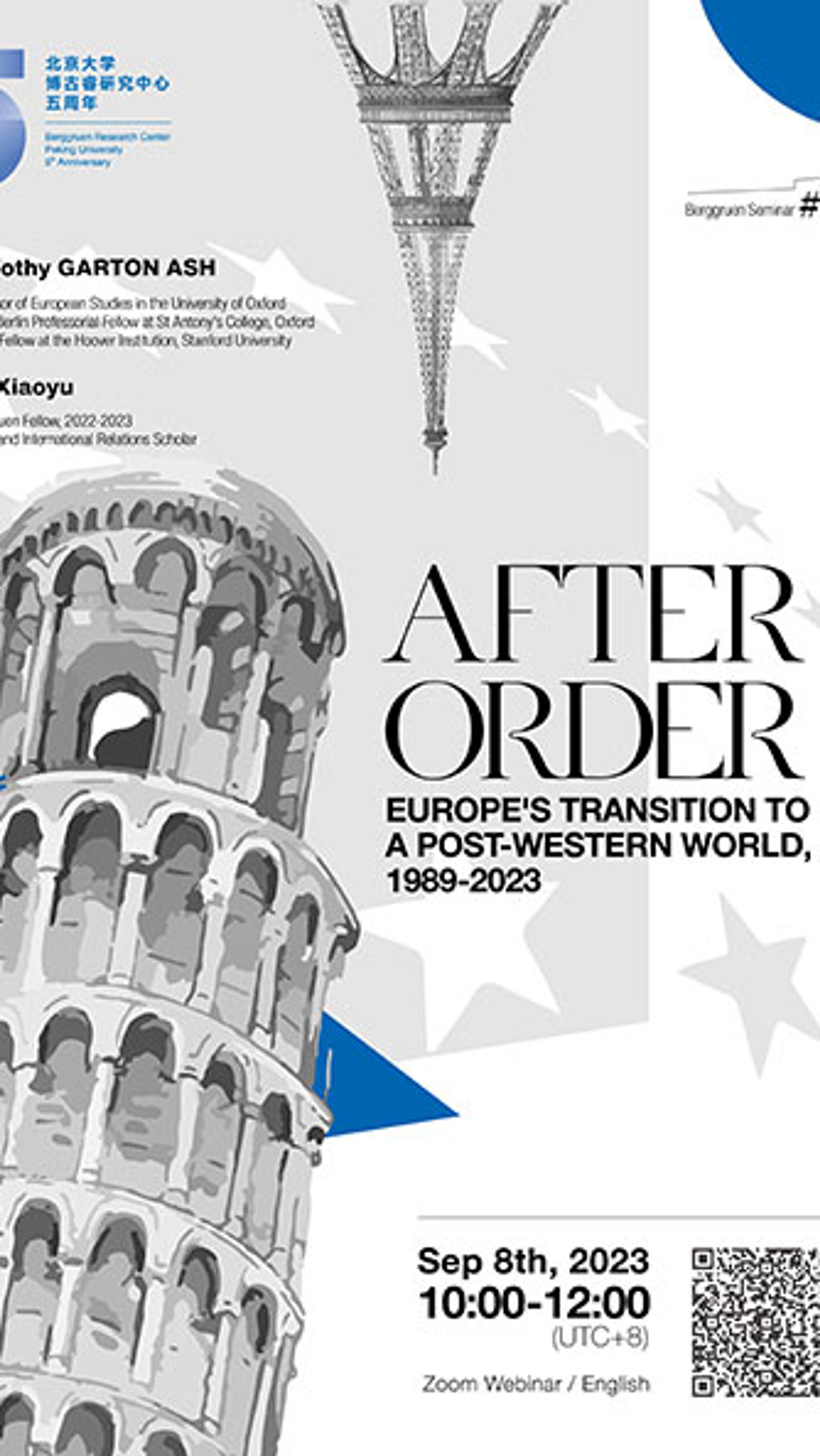From “Drawing Analogies” to “Meaning Pointing”: A Method of Argument in Chinese Philosophy
- Date: March 30, 2023
Chinese philosophy offers a distinctive approach to understanding and articulating the Dao (daoti 道体) and the nature of the heart-mind (xinxing 心性). Such approach focuses on concrete, visible things and patterns rather than abstract metaphysics. The Dao and patterns (li 理) are not presented in terms of purely conceptual or logical principles and inferences but are explained through observing images and analogies to reveal the symbolic manifestations of the Dao hidden in things. This seminar explores the examples of “drawing parallel or close analogies” (nengjin qupi 能近取譬) in pre-Qin Confucianism and “pointing out the meaning of matters” (zhishi wenyi 指事问义) in the history of medieval Chan Buddhist thought.
Discussion Topics:
- How does classical Chinese philosophy offer a unique and genuine way of talking about the Dao and reality?
- In what ways did classical Confucianism employ the use of analogies to engage in philosophical interpretation?
- What is the nature of the discourse of “pointing out the meaning of a matter” in Chinese Chan Buddhism?
Speaker
GONG Jun
Professor of Philosophy, Sun Yat-sen University
2022-2023 Berggruen China Center Fellow
GONG Jun is a professor at the Department of Philosophy and a director at the Center for Buddhist Studies at Sun Yat-sen University. He is a member of the academic editorial board of New History, and editor-in-chief of the Chinese Buddhist Review. He is mainly engaged in research on the history of Buddhist thought, East Asian Zen Buddhism, interpretation of Buddhist classics, Buddhism and society, and ecological ethics. His publications and translations include The History of Modern Buddhism as ‘Knowledge’ – An Intellectual History Discourse in the East Asian Perspective, Introduction to Chinese Chan Studies, A History of Zen: A Problem-Centered Discourse on the History of Ideas, Pruning the Bodhi Tree: The Storm over Critical Buddhism” (translation), etc.
Moderator
WANG Song
Professor of Philosophy, Peking University
WANG Song has been teaching Chinese Buddhism and Japanese Buddhism at the Department of Philosophy and Religious Studies of Peking University. His studies have been focusing on the history and thought of Huayan/Kegon School and he has published several books, such as: A Study on the Thought of the Huayan School in the Song Dynasty, Japanese Buddhism: From the Beginning till 20th Century, and A Critical Annotation and Study on the Huayan Fajie Guanmen.
Summary
On the evening of April 4, 2023, the Berggruen Research Center at Peking University invited Gong Jun, a professor with the Department of Philosophy at Sun Yat-sen University and a 2022-2023 Berggruen China Center Fellow, to give an offline lecture themed “From ‘Drawing Analogies’ to ‘Meaning Pointing’: A Method of Argument in Chinese Philosophy” at the Peking University Stanford Center. Professor Wang Song from the Department of Philosophy and Religious Studies, Peking University, moderated the lecture, which was livestreamed on the online video platform Bilibili and via the Berggruen Research Center’s WeChat account.
In the lecture, Professor Gong discussed a distinctive approach that Chinese philosophy used to interpret the Dao and the nature of the heart-mind, with two examples—the idea of “drawing parallel or close analogies” advocated by Confucian philosophers in the pre-Qin period and the idea of “pointing out the meaning of matters” in the history of medieval Zen Buddhism. He analyzed the traditional Chinese method to narrate “metaphysics” by answering three questions: What is the method of discourse that highlights “all things you can touch are true” in classical Chinese philosophy? How did ancient Confucian philosophers conduct reasoning by means of “placing oneself in another’s place”? What kind of discourse is the idea of “pointing out the meaning of matters” held by Zen Buddhism?
Discourse on the “Dao” Based on the Idea of “All Things You Can Touch Are True”
In the history of traditional Chinese philosophy, Buddhism, Daoism, and Confucianism all underwent debates around the concepts of “all things you can touch are true” and “everything has a reason.” When discussing metaphysics or issues related to Dao and Reason, they emphasized exploring truth through specific things and experiences, rather than conceptual and logical discourse.
“Astronomical observation” and “divination” represent a method of figurative reasoning used by Confucianism in the past. An important premise of this method is the ability to reveal the existential truth based on daily observation and experience. We often reveal and manifest such truth with similes or metaphors.
Confucius suggested “drawing parallel or close analogies.” This means the method to discuss “Dao” and metaphysics lies in “what you can see, what you can hear, and what you can think.” In other words, the method is focused on exploring answers to philosophical questions from the things or incidents around you. Instead of simply describing how the things or incidents happened and what you have seen, one needs to elucidate the moral significance behind them.
Elucidating the Importance of “Dao” Doesn’t Mean Getting Rid of Life Experience Because It Exists in Your Life Experience
Taking “Divination” in Commentary on the I Ching as an example, “benevolence” advocated by Confucius is an extremely important concept in Confucianism, the philosophical concept that one should understand based on his or her personal life experience and moral practice. When talking about the “heart of benevolence”, Mencius also adopted the methods of “drawing parallel or close analogies” and called for further extending “the heart of benevolence to others”.The ideal of “self-cultivation, a well-managed family, and the ability to administer the state and to bring peace to the nation,” mentioned in The Great Learning, marked a generalization of the discourse method. Zhu Xi interpreted the method as “ancient Confucian masters promoting the concept of benevolence first among their relatives, and then to all the people”, that is to say, “from near to far and from easy to hard”.
“From near to far”, which seems a common-sense rule today, in fact contains profound connotations. It is a kind of empirical narration or discourse, behind which is the discussion on the symbolic “Dao”.
Another example from “Divination” in Commentary on the I Ching are two ways of discourse: symbolic discourse and conceptual discourse, of which the latter one is more familiar to us, namely, discussing the Dao as reality with concepts.
The discussion on symbolic discourse in Commentary on the I Ching can be seen in the “Ze (abstruse truth) under heaven”. “Ze” refers to an invisible, hidden truth which is manifested in experiences, things, incidents, and stories in a symbolic way. Cheng Yi’s explanation of this topic is interesting. He held that “Ze” was a metaphysical topic on Dao, which could not be felt directly, but one could “figure out the reasons of both the visible and invisible things” through stories in a figurative manner. Explaining “abstruse truth” with visible things and common sense is a discourse method.
We can leverage Western theologian Paul Tillick’s narration about the importance of symbolism in discourse to interpret the statement of “taking everything from both near and far” in Commentary on the I Ching. He believed the power of being needed to be manifested in a symbolic way. This indicates his understanding of the boundary of language. This understanding, in fact, is vividly echoed by a statement in Commentary on the I Ching: “No book is exhaustive; No speech is exhaustive.”
Interpreting “Practicality” in Chinese Philosophy
Professor Gong used the concept of “practicality” to narrate the difference between traditional Chinese philosophy’s emphasis on experiences and the pragmatism advocated by American philosophy. Eastern philosophies have all fostered the tradition of practicality. For instance, both Confucianism and Buddhism pursue enlightenment through practice and preach their discourse through empirical approaches. When discussing “reasons”, they tend to seek truth upon specific cases, and discuss based on what they have experienced as well as incidents in everyday life, instead of conceptual discourse. In Confucian traditions, language has the function to “stoop to bring things into completion” and “understand thoroughly the truth of all things on Earth and handle affairs successfully accordingly”. From the perspective of linguistic philosophy, this can be considered a kind of pragmatic efficacy. Language involves not only an object or concept, but also has the power and role to function in practice.
From this perspective, the relationship between “extracting images” and “discourse” in “Divination” of Commentary on the I Ching shouldn’t be simply understood as one between “name” and “fact.” Previously, “name” (concept) and “fact” (object) were more likely to understand the discourse on the Dao as reality based on traditional Western knowledge. According to Confucian traditions, however, language is a type of action to generate practice, which has a strong practical characteristic.
A line in “Divination” reads: “A virtuous man’s good words from home can be responded to by people thousands of miles away.” This is about how to reveal hidden meanings of things with words, and how language generates social influence in action. Saying and doing have been the “essentials” of virtuous men, which involve not only ethical and moral practice, but also social practice. Compared to Western epistemology, traditional theories in I Ching paid more attention to discourse’s impact on ethical practice and even the social and political topics, rather than how concepts are explained.
Transition in the Way of Discourse: Wang Bi’s Annotations on I Ching
In the history of I Ching studies, Wang Bi made a notable contribution: He denied the “incident-based symbolism” in traditional theories of Commentary on the I Ching, freed the Confucian school of thought from intricate commentaries on classics, and made “pointing out the meaning of matters” a philosophical method for abstract discussions. Even from the perspective of philosophy history, this marked an improvement to the way of discourse in Chinese philosophy.
Historians of traditional philosophy spoke highly of Wang Bi, noting that his metaphysical and philosophical methods elevated Commentary on the I Ching to a new level. In his interpretation of I Ching, however, Cheng Yi sharply criticized Wang Bi, saying that he deviated from the discourse from traditions.
Wang Bi put forward the concepts that “one needs to learn from his own mind and present unique ideas that are sharp and precise” and that “even if the truth is near, we need to prove its origin from the very beginning.” This almost interrupted the tradition of “understanding truth through visible images and feeling virtues through direct contact” that Confucianism held since the pre-Qin period. Through the traditional method of “extracting truth from analogies around oneself” and seeking “Ze under heaven” mentioned in Commentary on the I Ching, the hidden, delicate Dao could be revealed in an explicit manner. According to Wang Bi, however, “hidden, dedicate” things should be conveyed in an abstract way.
Cheng Yi criticized Wang Bi’s idea on metaphysical transformation in the theories of changes, and even excluded him from the orthodox academic studies of I Ching. In Cheng’s eyes, Wang Bi failed to understand the Confucian idea of “one origin for principles and applications and the integration between explicitness and delicateness”, namely, that dedicated truths and the explicit images are supposed to be unified.
As for the divergence on this question, we can conclude that Cheng Hao and Cheng Yi grasped the tradition of “extracting truth from analogies around oneself” in the studies of I Ching, which was often neglected in previous studies of the history of traditional philosophy. Starting from Wang Bi, the discourse of philosophy no longer sought reasoning based on experiences. This marked an evolution of epistemology, with connection to our understanding of philosophical discourse brought about by the introduction of Western philosophy since the beginning of modern times.
“Drawing Analogies” and “Pointing out the Meaning of Matters” Are Closely Connected to Practical Philosophical Traditions
Just like the Confucian approach of “drawing parallel or close analogies”, the idea of “pointing out the meaning of matters” advocated by Zen Buddhism also has a deep connection with practical philosophical traditions.
The concern on “pointing out the meaning of matters” was first put forward by Master Yinshun in History of Chinese Zen Buddhism. Master Yinshun held that “pointing out the meaning of matters” and “understanding sutras based on things” were important concepts of the Dongshan sect in the early stage of Zen Buddhism. Buddhism has a lot of abstract concepts and principles. When a master taught the meaning of Buddhist scriptures to his disciples, he often explained them with examples from everyday life and personal experiences, which was called “understanding sutras based on things”.
The metaphysical transformation of Buddhist theories has faced massive criticism. For example, the sutra explanation of the Tiantai sect of Buddhism showed a distinctive trend of metaphysical and philosophical conversion, and Wang Bi adopted a complete set of abstract theories when explaining I Ching. All of these were opposed to varying degrees.
For the Dongshan sect, Buddhist principles aren’t just abstract Zen doctrines and profound theories; they should be understood through all things in practice. Professor Gong further pointed out that this way of Zen Buddhism discourse was influenced by the saying in Zhao Lun (a collection of Buddhism theories by Monk Zhao): “Is Dao far from us? You can find truth through experiencing realities.” To explain the truth, one doesn’t need to employ abstract reasoning if telling stories will suffice.
We can hereby sense the logical and empirical features of traditional Chinese philosophy: arguing on Dao through experiences and things around yourself, rather than abstract philosophical concepts and discourses. Unlike the concept of “idle talk” coined by Heidegger, this method conveys a sort of “essential principle”.
“Pointing out the meaning of matters” in Chinese Zen Buddhism: With the Early Stage of Zen Philosophy as an Example
When the argumentation of Zen Buddhism is discussed, many often mention that Zen Buddhism doesn’t spread its theories with written texts, but through reasoning beyond scriptures. Research on the history of Zen Buddhism shows that this tradition wasn’t formed by the Hongzhou sect until the mid-Tang Dynasty (618-907). However, In the early stage of Zen Buddhism, namely, from the period of Bodhidharma to the period of Master Huineng, practioners didn’t refuse to discuss scriptures and other textual materials as today. Moreover, its reasoning wasn’t focused on discussing abstract concepts, like subsequent Buddhist theology was, and instead centered on telling stories about what was happening around oneself.
In the view of Zen Buddhism, to discuss previous classics and understanding the in-depth connotations of Zen, one must integrate textual narration and mental experience. This is the “introspection approach” put forward by Master Tiantai. That is to say, before understanding scriptures and discussing principles, one must observe his own mind and have empirical experiences. In this sense, this tradition of Zen Buddhism is similar to the “philosophy of mind” invented by Lu Jiuyuan and Wang Shouren: treasuring one's innate virtues first and then seeking truth through continuous learning.
Zen Buddhism holds that one can understand “truth” through simple analogies—which can be stories and incidents happening around oneself or even body language and gesture. This is why Zen masters sometimes used a blow and a shout to waken disciples from errors. All of these demonstrate the historical context of “drawing parallel or close analogies” and “pointing out the meaning of matters”.
There were also some other examples in the early period of Zen Buddhism: Huike, the second patriarch of Zen Buddhism, called for “obtaining enlightenment through contacting things around oneself”, which was evidently a way to “seek truth case by case”; Sengcan, the third patriarch of Zen Buddhism, often employed metaphors such as golden rings and water ripples when explaining Zen doctrine, evidencing the extensive use of analogies and metaphors in Zen Buddhism. The Dongshan sect founded by Hongren, the fifth patriarch of Zen Buddhism, particularly criticized the practice of using philosophical methods to understand truth, and stressed “extracting truth case by case and revealing truth with examples”; Huineng, the sixth patriarch of Zen Buddhism, used metaphors such as the sail, Bodhi tree, and mirror when discussing topics about Zen principles and Buddhist doctrines. Chen Yinque and Paul Demiéville once debated the metaphor of Bodhi tree, and the latter even wrote an article to discuss the metaphor of mirror in the Platform Sutra of the Sixth Patriarch. The Lotus Sutra also includes many metaphors and analogies, all of which try to explain truth with examples, instead of abstract, conceptual reasoning. Zen Buddhism holds that “introspection” doesn’t come from scriptures but through “reviewing the mind”. It should stem from practice instead of metaphysical reasoning, so that ordinary people can understand and follow. Sometimes the masters don’t explain truth to their disciples, and instead use a blow or shout to waken them. This is also a way to teach Zen doctrines and seek truth case by case.
With the passage of time, some formerly figurative, symbolic discourses of Zen Buddhism gradually turned into specific cases, and its principles were generalized in an extremely specific manner. As a result, every word, concept, and plot of Zen Buddhism we read today are easy to understand, but their connotations are hard to decipher. It seems that all truths can be expressed in everyday life or even a single movement, but eventually every movement became mysterious, “leaving no trace to follow” and “finding no metaphor for ultimate truth”.
Explanation on the Way of Discourse in the History of Philosophy
“Drawing parallel or close analogies” is a way to discuss the Dao as reality from the source. Traditional Chinese philosophy held that the “Dao” isn’t isolated from the worldly life, but embedded in all beings, and the purpose of philosophy and Buddhist sutra explanation is to highlight the “Dao” hidden in the worldly life. In fact, both “drawing parallel or close analogies” and “pointing out the meaning of matters” are methods to render the Dao in a sensible and figurative way through stories. This is similar to the idea of Martin Heidegger who held that to overcome metaphysical conception, thinking should descend and “step back” to “thinking in nearness”, which should be understood by returning to the worldly life.
After the interruption of Chinese metaphysics in the Wei (220-266) and Jin (266-420) dynasties, the anti-metaphysics discourse of traditional Chinese philosophy regained life in Zen Buddhism during the Tang Dynasty and moved towards new abstraction after being fully used. Traditional Chinese philosophy discourse experienced complicated transitions.
Then, Professor Wang Song made a short comment and chaired the Q&A session. Professor Gong answered the questions raised by the audience on the relationship between the traditional pre-Qin philosophical discourse on logic and the practice-oriented tradition of “drawing parallel or close analogies”, the traditions of Eastern and Western philosophies, and the history of Buddhism and Chinese philosophy.
Written by Yu Han, a Schwarzman scholar at Tsinghua University

